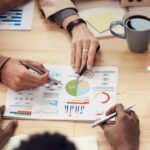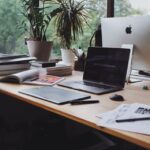Most entrepreneurs pursue this career path because they desire the freedom that comes with the lifestyle. However, entrepreneurship takes a lot of dedication, hard work, and persistence. Entrepreneurship is a journey that, at times, can be overwhelming and stressful, and many entrepreneurs find themselves stressed and burned out.
Mindful entrepreneurship is a practice that encourages entrepreneurs to cultivate presence and focus in their work and personal lives so they don’t become overwhelmed. Let’s explore the benefits of mindful entrepreneurship, techniques for incorporating mindfulness into your routine, and tips for staying focused in a busy world.
Benefits of Mindful Entrepreneurship
Practicing mindfulness has improved mental clarity and focus while increasing creativity and productivity. Mindful entrepreneurship can help you stay calm, centered, and grounded in challenges and setbacks.
By cultivating a mindful entrepreneurship approach to your work, you can improve your decision-making skills, build stronger relationships with clients and colleagues, and maximize your time and resources.
Techniques for Incorporating Mindfulness
There are several techniques for you to start incorporating a mindfulness routine into your day. Here are a few examples:
- Meditation: Meditation is a mindfulness practice that requires sitting still and directing your attention to your breath or a specific focus point. This technique is widely known to alleviate stress, heighten self-awareness, and enhance concentration.
- Mindful breathing: Mindful entrepreneurship breathing is a simple but effective technique that involves taking slow, deliberate breaths while attentively observing the sensations of your breath. Practicing this breathing technique can be done anywhere and at any time, whether standing in a queue or sitting at your desk.
- Gratitude journaling: Gratitude journaling is a practice that involves writing down things you are thankful for each day. It can help you cultivate a positive mindset and increase feelings of happiness and contentment.
- Mindful eating: Mindful eating is a conscious eating practice that involves being fully present while savoring your food, including paying attention to its taste, aroma, and texture. This technique can help you appreciate your meals more deeply and decrease impulsive snacking or overindulging.
Tips for Staying Focused:
In a fast-paced and demanding world, staying focused on your goals and priorities can be daunting. As a Mindful entrepreneur, having a well-defined vision and a well-structured plan to achieve them is essential. Here are some practical tips that can help you stay focused on your goals:
- Set clear goals: Establishing clear and achievable goals is crucial to maintaining focus and motivation as an entrepreneur. To set effective goals, ensure they are specific, measurable, and time-bound. Setting goals you can take action on will enable you to maintain a clear sense of direction and progress toward your desired outcomes.
- Prioritize your task list: Effective task prioritization is critical to staying focused and achieving your goals as an entrepreneur. To stay on track, create a daily to-do list and rank your tasks according to their level of importance and urgency.
- Eliminate distractions: Minimizing distractions is vital to staying focused and productive. To reduce interruptions and improve concentration, turn off your phone notifications to create a quiet workspace.
- Take breaks: Regular intervals are crucial for maintaining focus and avoiding burnout. Step away from your work for a few minutes to recharge your batteries. Taking a short walk, meditating, or doing light stretching can help you relax and refocus.
In Summary
Mindful entrepreneurship has emerged as a powerful practice that can help entrepreneurs stay centered, productive, and focused. By integrating mindfulness techniques into their daily routine and keeping their attention on their goals and priorities, entrepreneurs can build a thriving business without compromising their physical and mental well-being.
Keetria is an entrepreneur, wellness advocate, and brand strategy coach for creatives & entrepreneurs with 16 years of public relations expertise working with some of the world’s leading brands, startups, media personalities, and entertainers. If you want to work together, don’t hesitate to reach out!






















